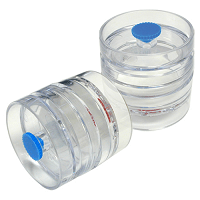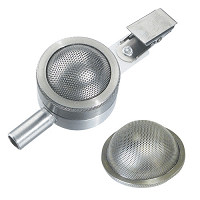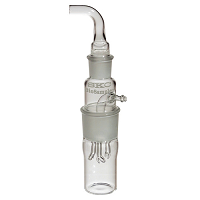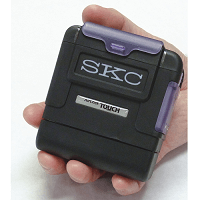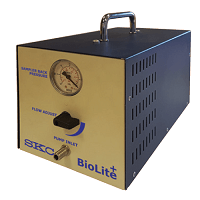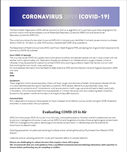
CORONAVIRUS 2019 (COVID-19) Facts and Sampling Solutions
The World Health Organization (WHO) defines coronavirus (CoV) as a large family of viruses that cause illness ranging from the common cold to more severe diseases such as Middle East Respiratory Syndrome (MERS-CoV) and Severe Acute Respiratory Syndrome (SARS-CoV).
The current occurrence of a new strain known as SARS-CoV-2 (not previously identified in humans) causes coronavirus disease 2019 or COVID-19. On March 11, 2020, WHO publicly characterised COVID-19 as a pandemic.
The Department of Health & Social Care (DHSC) and Public Health England (PHE) are leading the UK government response to the Coronavirus (COVID-19) outbreak.
How COVID-19 Spreads
The virus that causes COVID-19 is spread mainly from person-to-person and between people who are in close contact with one another (within approximately 2m). Respiratory droplets are released in an infected person’s coughs/sneezes, similar to influenza. It may be possible for a person to contract COVID-19 by touching a surface or object that has the virus on it and then touching their own mouth, nose, and/or eyes.
For more detailed information from the Health & Safety Executive (HSE) and the American Industrial Hygiene Association (AIHA).
Symptoms
These range from mild to severe respiratory illness with fever, cough, and shortness of breath. Some people infected with the virus have reported experiencing non-respiratory symptoms. Other people, referred to as asymptomatic cases, have experienced no symptoms at all. Complications, such as pneumonia in both lungs, can arise and lead to death, particularly in the elderly, immunocompromised/immunosuppressed, or in those individuals who have underlying health conditions. Symptoms may appear in as few as two days or as long as 14 days after exposure.
Potential Risk
Risk is dependent on exposure. Some people will have increased risk of infection such as workers caring for COVID-19 patients and others in close contact with such patients.
Evaluating COVID-19 in Air
SARS-CoV-2 that causes COVID-19 is a new virus with many unanswered questions. However, scientific professionals can look to previous investigations of corona viruses such as SARS-CoV and the general principles of evaluating biological contaminants. SARS-CoV investigations focused on identifying environmental contamination in infected areas and the potential for transmission to adjacent areas.
Sampling approaches included swab sampling of surfaces and air sampling followed by Polymerase Chain Reaction (PCR)1 analysis.
Listed are some air sampling options for viruses and important details on sampler selection.
Viruses are challenging to culture because they require a host cell to grow. SKC recommends that you seek guidance from a qualified environmental microbiology laboratory with expertise in viruses before performing any air sampling or studies.
Air Sampling Options for Viruses
| Sampler | Filter Cassettes 2 3 5 225-1723
|
Button Sampler 6 225-360
|
BioSampler 4 5 225-9595
|
| Key Features | Easy, economical, and widely used
Small, easy, lightweight sampling train Ideal for personal sampling and placement inside and outside of test areas Used by agencies to sample for SARS-CoV |
Superior collection of inhalable-sized bioaerosols
Unique inlet and proximity to filter minimises transmission losses; promotes equal distribution of particles Closely follows the ISO 7708/CEN sampling criteria for inhalable particulate mass Autoclavable |
Allows 8-hour sampling if filled with SKC ViaTrap mineral oil (suitable for specific analyses)
Can be filled with sterile distilled water or other suitable liquids for PCR analysis Ideal for research studies |
| Mode of Collection | Filtration, collection onto filter | Filtration, collection onto filter | Impingement, collection into liquid |
| Media | 37 mm 0.3 μm PTFE Filter used for SARS | 25 mm, sterilised Gelatin Filter (growth culturing, maintains viability)*
*For short-duration sampling only |
Sterile distilled water, physiological saline, phosphate buffered salve (PBS), nutrient broth, or peptone water |
| Recommended Sample Pump |
AirChek Touch
|
AirChek Touch
|
BioLite+
|
| Accessories | Part Number |
| Calibration Adaptor for Button Sampler | 225-361 |
References:
1 Booth, T.F. et al., “Detection of Airborne Severe Acute Respiratory Syndrome (SARS) Coronavirus and Environmental Contamination in SARS Outbreak Units,” J. Infectious Disease, 2005, May 1; 191(9), pp 1472-7, https://doi.org/10.1086/429634
2 Verreault, D. et al., “Methods for Sampling of Airborne Viruses,” MMBR, 72 (3), Oct. 2008, pp 413-44, doi: 10.1128/MMBR.00002-08, https://bit.ly/2TFbD15
3 Ong, S. et al., “Air, Surface, Environmental, and Personal Protective Equipment Contamination by Severe Acute Respiratory Syndrome Coronavirus 2 (SARS-CoV-2) from a Symptomatic Patient,” JAMA, March 4, 2020, doi: 10.1001/jama.2020.3227, https://bit.ly/38oW8jn
4 Cao, G. et al., “Development of an Improved Methodology to Detect Infectious Airborne Influenza Virus Using the NIOSH Bioaerosol Sampler,” Jnl. of Env. Mon., 2011, Dec. 13(12), pp 3321-8 Research Gate: 51695684
5 Nguyen, T. T., et al., “Bioaearosol Sampling in Clinical Settings: A Promising, Noninvasive Approach for Detecting Respiratory Viruses,” Open Forum Infectious Disease, 4(1) Winter 2017, https://doi.org/10.1093/ofid/ofw259
6 Burton, N.C., et al., “Physical Collection Efficiency of Filter Materials for Bacteria and Viruses,” Ann. Occup. Hyg., Vol. 51, No. 2, 2007, pp. 143-151, https://doi.org/10.1093/annhyg/mel073
This information is also available as a downloadable pdf:

